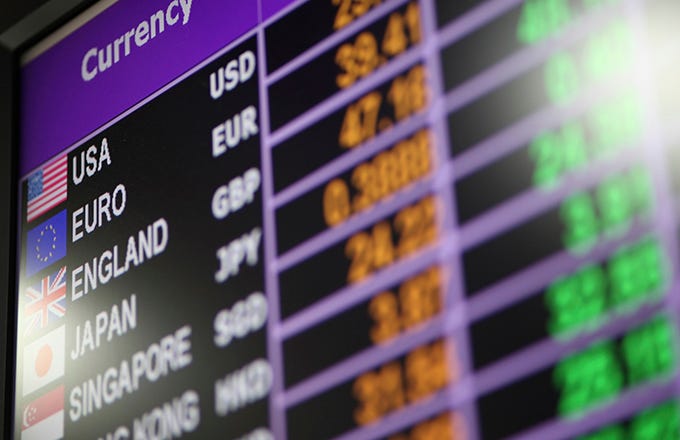Why Goldman thinks the U.S. dollar will stay Strong
posted on
Sep 04, 2016 07:31PM

We may not make much money, but we sure have a lot of fun!


The U.S. dollar (USD) was surprisingly strong during 2014 and 2015, but investment-banking giant Goldman Sachs Group Inc. (GS) believes that there is more room to grow. This has been a consistent refrain from Goldman, which first predicted strong dollar growth in May 2016, and reasserted its confidence in its midyear report. If correct, a strengthening dollar should benefit companies that conduct most of their business in the United States, at least relative to companies with a stronger international presence. It could also be a boon to American consumers who want to purchase foreign products, potentially offering a nice cost-of-living boost.
Since Goldman's July proclamation, the United States posted much weaker-than-expected gross domestic product (GDP) growth in the second quarter of 2016. The news fell hard on the USD, which had been rising prior to the GDP report. All of the dollar's gains in July were wiped out by Aug. 2, 2016. This does not mean that Goldman Sachs was wrong, necessarily, but there are some valid counterpoints to bull arguments for the dollar.
The Goldman Sachs Global Investment Research team released "Portfolio Passport: Take Refuge in America" on July 19, 2016. This 50-page document makes the case that investors should tilt new investments toward American stocks with high domestic sales and foreign stocks with high U.S. sales.
Goldman Sachs placed particular emphasis on U.S. domestic stocks with 100% domestic sales. The strategy behind American consumer-facing businesses was designed to insulate against "Brexit fallout, China growth risks and a strengthening dollar, while benefiting from the relative stability of the U.S. economy," the report said. The report notes that domestic sellers with an American consumer base tend to have lower price-to-earnings (P/E) ratios and higher projected growth.
Goldman Sachs attributed its bullish outlook for the USD to "shifts in market expectations for global growth and central bank policy." Goldman's economists anticipated a 65% chance of a Fed rate hike before 2017, but still expected foreign central banks to appear more dovish than the Fed. This would leave the USD as the metaphorical cleanest shirt in the foreign-exchange (forex) hamper.
This is an important point. The strength of the dollar does not rest solely on the policy of the Fed, but rather, on relative Fed policy when compared with foreign central banks. The Bank of Japan (BoJ) and European Central Bank (ECB) each went negative earlier in the year. This divergence in central bank policy could force forex traders to seek refuge in the U.S. dollar.
The report pointed out that the dollar has been up 2% since Great Britain's vote to leave the eurozone, and that earlier fears about domestic and global recession should recede and allow the USD to float higher. Goldman's experts believe that the Fed will draw closer to a rate hike by year's end and, just as with the last rate hike in December 2015, provide a boost for the dollar.
The struggling economy put downward pressure on Fed-hike expectations. The second quarter of 2016 marked the third straight quarter below 2% growth. One month earlier, Goldman liked the resilient U.S. economy. Thanks to weak predicted earnings, the company's research team estimated a 2% growth rate in the second quarter, which is less bullish than the 2.6% estimate provided by Reuters' survey of economists, but almost double the 1.1% actual growth posted by the economy.
Less than one week after the Goldman Sachs report was published, the U.S. Dollar Index (DXY) reached its highest point since February 2016. The dollar showed strength in light of difficult conditions in China, weakness in South America and the continuing fallout in the U.K. and European Union (EU) post-Brexit.
The likelihood of the Federal Reserve increasing the federal funds rate later in the year appears to be declining. By the end of July 2016, the chances of an interest rate hike in September declined from 18% to 12%. The Goldman Sachs futures market team reported that the odds of a December rate hike had fallen to just 40%.
Investopedia